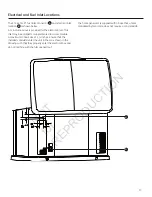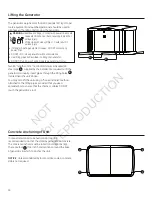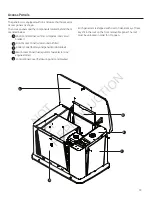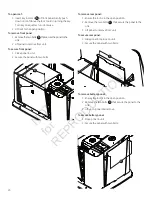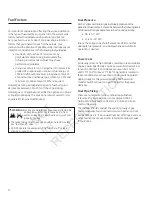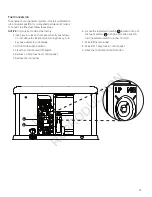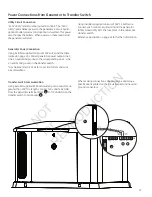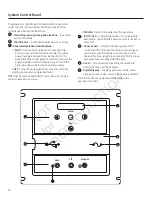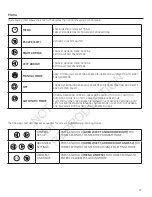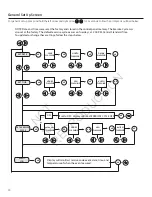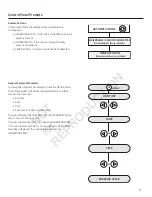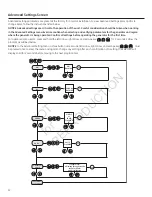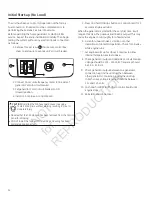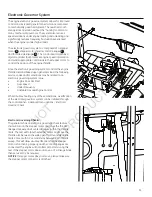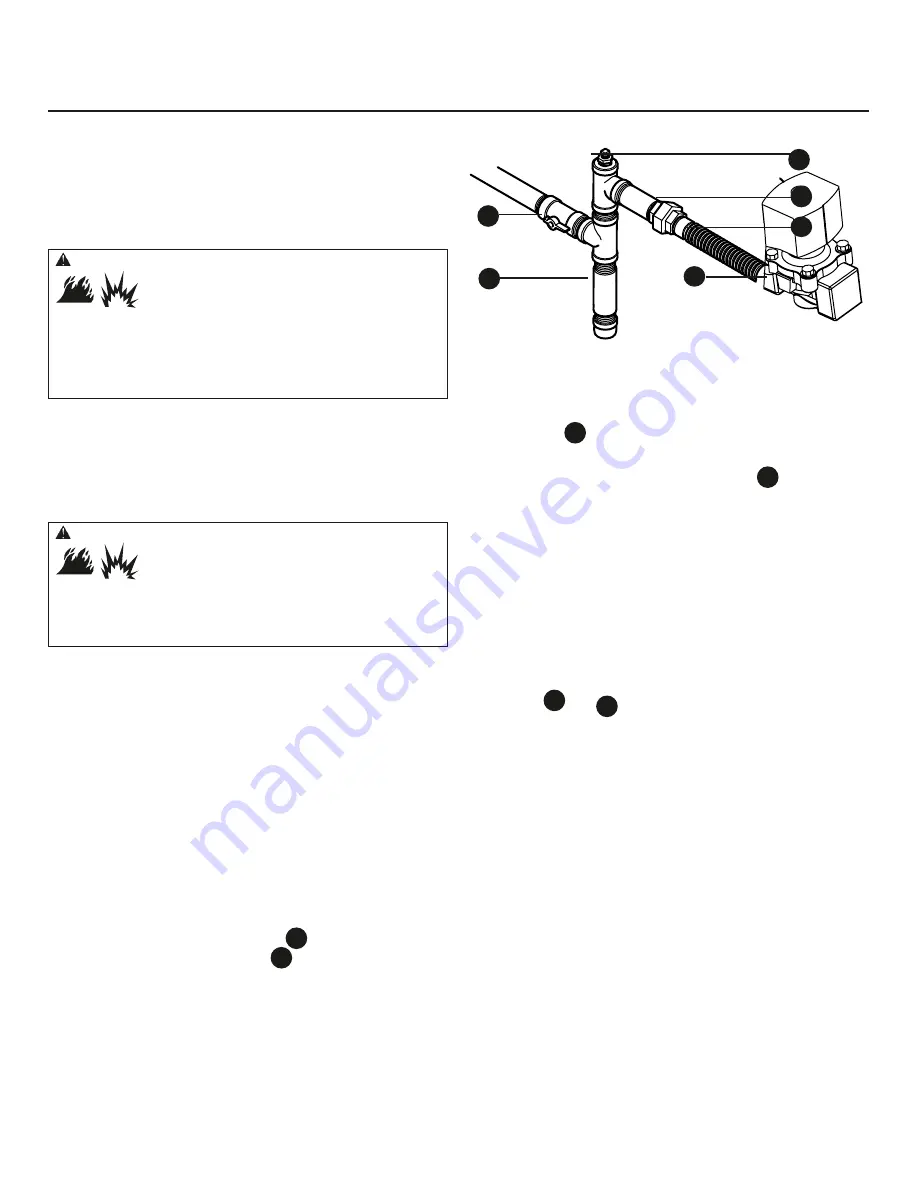
21
the information below is provided to assist gaseous
fuel system technicians in planning installations. in no
way should this information be interpreted to override
applicable fuel gas codes. consult with your local fuel
supplier or fire Marshall if questions or problems arise.
to the instaLLer:
Consult with the generator owner(s) and
convey any technical considerations that might affect their
installation plans before applying these general guidelines.
The following general rules apply to gaseous fuel
system piping:
WarninG
Propane and Natural Gas are extremely flammable
and explosive, which could cause burns, fire or
explosion resulting in death, serious injury and/or
property damage.
• Before placing the generator into service, the fuel system lines
must be properly purged and leak tested.
• No leakage is permitted.
NOTICE
The supplied flexible steel fuel line is not to be installed
underground or in contact with the ground.
•
The entire flexible steel fuel line must be visible for
periodic inspection and must not be concealed within
nor contact nor run through any wall, floor, or partition.
• The piping should be of a material that conforms
to federal and local codes, rigidly mounted and
protected against vibration.
• Piping should be protected from physical damage
where it passes through flower beds, shrub beds, and
other cultivated areas where damage could occur.
NOTICE
The illustration is representative of a typical
installation. Your installation may differ.
• Install the flexible steel fuel line
B
(supplied) between
the generator fuel inlet port
a
and rigid piping
to prevent thermal expansion, contraction, or any
standby movement from causing excessive stress on
the piping material.
the Gaseous fuel system
B
C
E
D
F
A
• A union
c
or flanged connection shall be provided
downstream to permit removal of standby.
• A manometer port should be provided
D
. A digital
manometer, P/N 19495, is available at your Briggs &
Stratton service center. When the initial test runs are
completed, the manometer is removed and the port
is plugged. The manometer port permits temporary
installation of a manometer to ensure that the
engine receives the correct fuel pressure to operate
efficiently throughout its operating range.
• Where the formation of hydrates or ice is known to
occur, piping should be protected against freezing. The
termination of hard piping should include a sediment
trap
f
where condensate is not likely to freeze.
• A minimum of one accessible, approved manual
shutoff valve shall be installed in the fuel supply
line within 6 ft. (180 cm) of the home generator.
• A manual fuel shut-off valve should be installed in the
interior of the building.
• Where local conditions include earthquake,
tornado, unstable ground, or flood hazards, special
consideration shall be given to increase strength and
flexibility of piping supports and connections.
• Piping must be of the correct size to maintain the
required supply pressures and volume flow under
varying generator load conditions with all gas
appliances connected to the fuel system turned on
and operating.
• Use a pipe sealant or joint compound approved for
use with NG/LPG on all threaded fittings to reduce the
possibility of leakage.
• Installed piping must be properly purged and
leak tested, in accordance with applicable codes
and standards.
WarninG
Propane and Natural Gas are extremely flammable
and explosive, which could cause burns, fire or
explosion resulting in death, serious injury and/or
property damage.
• LP gas is heavier than air and will settle in low areas.
• Natural gas is lighter than air and will collect in high areas.
• The slightest spark could ignite these fuels and cause an explosion.
• DO NOT light a cigarette or smoke.
E
NOT
for
REPRODUCTION
Summary of Contents for 20 kW Home
Page 10: ...10 Intentionally Left Blank N O T f o r R E P R O D U C T I O N ...
Page 41: ...41 NOTES N O T f o r R E P R O D U C T I O N ...
Page 42: ...42 NOTES N O T f o r R E P R O D U C T I O N ...
Page 43: ...43 Schematic Diagram Schematic Wiring Diagrams N O T f o r R E P R O D U C T I O N ...











